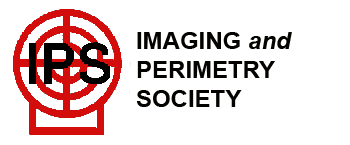 |
|
|
|
Measurement of the visual field limits: the perimeterIn 1857, just 1 year after von Graefe’s clinical paper, Hermann Aubert and Richard Förster of Breslau began a group of papers under the title "Contributions to the knowledge of indirect vision." They worked in this area for many years, at first using a tangent screen like von Graefe’s.
The test was done in a darkened room and, to keep the fixation from wandering, the screen and the test object were briefly illuminated by the arc from a Reis bottle. The patient watched the screen through a short tube lined with black felt so that the tested eye was not exposed to the flash. They later published their experience with colored stimuli in perimetry in the article "On the boundaries of color recognition of the lateral parts of the retina." In addition, they investigated two-point discrimination in the peripheral visual field. Aubert and Förster soon decided that it was important to keep the stimulus at a constant distance from the eye as it was placed in different parts of the visual field; their solution was a simple arc perimeter.
In 1872, Scherk developed a bowl perimeter to eliminate the distracting background that was always present in an arc perimeter. His problem was illuminating the surface evenly. He solved this by splitting the bowl at the zero meridian (i.e. through the blind spot) and connecting the two halves with a double hinge. This allowed him to get light onto the section that was being used. It was big, heavy, and expensive.
It was Brudenell Carter who stimulated the change in the standard visual-field plot. He had a Förster perimeter but he found it ‘costly and cumbrous’. He asked a London instrument maker to make a simpler one with an arc of only one quadrant (below). He wanted to map the location and size of the blind spot with more precision than had been previously attempted and he plotted its location in degrees from fixation. He was also able to do what everyone else was doing, that is, plot a line marking the ‘perimeter of vision’ in the periphery. It was not until 1893 that Groenouw coined the term ‘isopter’ for such an isosensitivity line on a perimetric chart.
Carter recommended uniformity in the plotting of visual fields ‘to render the charts universally intelligible’. His instrument was smaller, lighter, and cheaper than most of its competitors. It became available in 1873, and proved to be popular. Carter wanted everyone to continue to plot the visual field as seen by the patient but to record retinal locations as distances from the fovea along various radial meridians. All in all, it seemed to make better physiologic sense to plot retinal light sensitivity in this way and it soon became the universally accepted way to map visual fields. By the time Priestly Smith’s perimeter arrived in 1882, there were no more perimeters being made that adhered to Förster’s old system of putting the blind spot at the center of the visual field.
continue to The age of isopter perimetry: Bjerrum and the tangent screen back to Perimetry Pedigree back to The introduction of perimetry into medicine: von Graefe and the campimeter 1856 back to Table of Contents
Copyright 2008. Imaging and Perimetry Society |